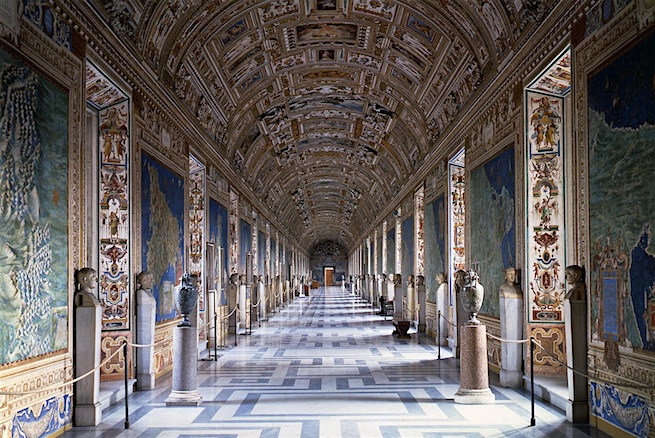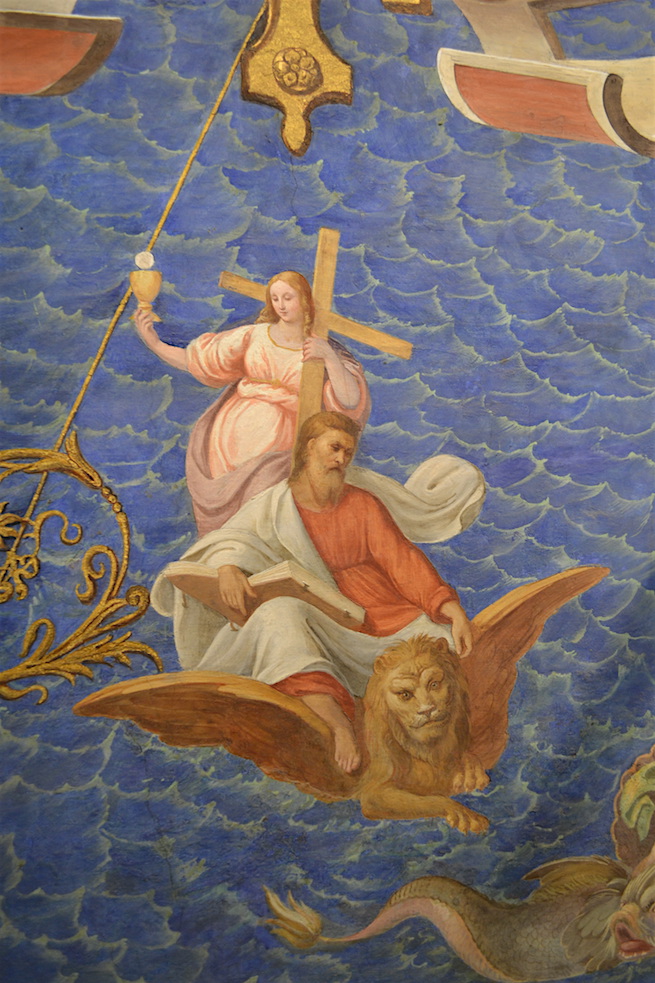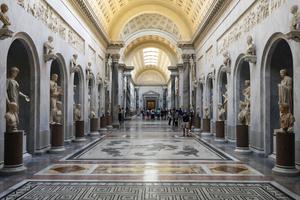Californian Donors Fund Restoration of Vatican Museum's Gallery of Maps

A four-year painstaking restoration of the Gallery of Maps in the Vatican Museums has been completed thanks to the generosity of Californian Catholic donors.
The $2.5m project, funded by the California Chapter of the Patrons of the Arts, has fully restored Pope Gregory XIII’s gallery that was painted from 1580 to 1583 by a team of top artists under the leadership of the famous cartographer and Dominican, Ignazio Danti.
The restoration was needed after the 40 meticulously painted maps of the entire Italian peninsular had suffered years of deterioration and previous botched restorations.
Pope Gregory commissioned the gallery so he could explore the Italian peninsula without leaving the safety of Rome. At that time, popes rarely left the city.
The maps, most of them measuring some 15 feet by 16 feet, are affixed to the walls of a vast gallery that leads to the Sistine Chapel. They had an almost 3D effect, with city landmarks, mountain valleys and the white crests of ocean waves clearly visible.
“The maps had no mistakes,” Maria Ludmila Pustka, head of restoration at the Vatican Museums — at least based on what was known of Italian geography at the time. “Danti did an excellent job,” she told the Wall Street Journal. The artists “omitted what they didn’t know for sure or didn’t have details — they didn’t bluff.”
“The maps are extremely detailed,” said Legionary Father Mark Haydu, the American head of the Patrons of the Arts in the Vatican Museums. He said it is like a medieval “Google Earth” as it placed every region of Italy in an aerial perspective. “Every mountain, valley, river, and village are recognizable and purposefully designed,” he told the Register. “Many of our American donors hunt through the maps to discover the small towns their families came from in Italy and always find them!”. Father Haydu himself said he found the home town of his great grandfather and grandmother, just outside Venice.
Pope Gregory XIII inaugurated the gallery “very early on in our national history,” Father Haydu pointed out, adding that it is “amazing that some 450 years later, Americans are helping save the patrimony created by those who discovered them.”
Writing in L’Osservatore Romano April 29, Antonio Paolucci, the head of the Vatican Museums, said there could be “no nicer way to bear witness to a real fidelity to the Church of Rome and to a proper Catholic pride than this generous American donation to the artistic beauty that the Vatican has nurtured for centuries, and that the Pope's Museums house and protect.”
Father Haydu said the California Chapter of the Patrons of the Arts “are essential friends and supporters to the Vatican Museums, and their donation covered the entirety of the restoration costs of this amazing gallery.”
He added that the maps are a “wonderful example of how the Church sponsored and promoted learning that benefitted all of Europe”, and that Danti’s mapping techniques “served transport, travel, commerce and business all through out the Italian peninsula.”
“The Gallery of the Maps is one of the most important, and technically challenging restorations that we have undertaken in the last years at the museums,” Father Haydu said, and pointed out that twenty young restorers had the chance to work on a historical project that has helped “launch these young people’s career.”
He said the gallery leads people down towards the Sistine chapel, and is a “must-see of the Museums, 120 meters of pure visual wonder."
At its inauguration, Pope Gregory said “Italia totius orbis regio nobilissima” —Italy is the “most noble region in the whole world”, Paolucci recalled, explaining that the adjective "noble" denoted all that is beautiful, varied, artistic, cultural and historical.
“The beauty and nobility of Italian history, that is what Pope Gregory XIII knew, and that is what we have a duty never to forget,” Paolucci said. “The generosity of our friends in California allows us to understand this as never before.”

Images courtesy of Patrons of the Arts in the Vatican Museums
- Keywords:
- antonio paolucci
- art history
- father mark haydu
- gallery of maps
- patrons of the arts in the vatican museums
- vatican museums

















